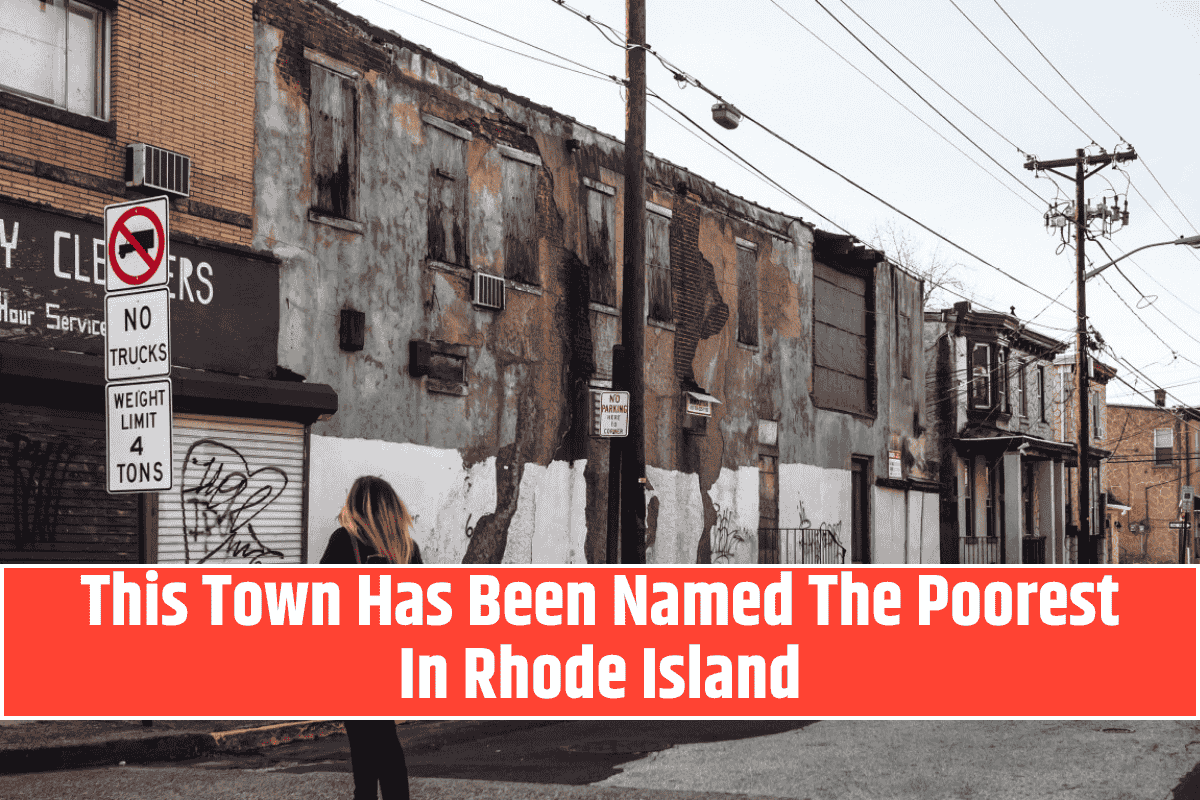Rhode Island may be the smallest state in the U.S., but its cities and towns show a wide gap in income levels and living conditions. Among them, Central Falls has been repeatedly identified as the poorest town in Rhode Island.
While it has a strong sense of community and deep cultural roots, Central Falls faces serious economic struggles, with high poverty rates and low household incomes compared to the state average.
In this article, we’ll explore why Central Falls holds this unfortunate title, and what the statistics tell us about the financial challenges its residents face.
Why Is Central Falls Considered the Poorest Town in Rhode Island?
Central Falls is often listed at the bottom of economic rankings in Rhode Island due to its high poverty rates and low median household income. According to the latest available data from various state and national reports, the city consistently shows signs of economic distress, especially among families and children.
1. High Poverty Rate
Central Falls has one of the highest poverty rates in the entire state. A significant percentage of residents live below the poverty line, with many struggling to afford basic needs like food, healthcare, and housing.
The poverty rate in Central Falls is much higher than the Rhode Island average, placing added pressure on schools, public services, and non-profit organizations in the area.
2. Child Poverty
One of the most concerning issues is the child poverty rate. In Central Falls, a large number of children grow up in households with incomes below the poverty level. This can impact their education, nutrition, and long-term health. It also creates challenges for schools and community programs that try to support young people in need.
3. Low Median Household Income
The median household income in Central Falls is substantially lower than the state median. While Rhode Island’s statewide median income is above $70,000, Central Falls lags far behind, with many households earning less than $40,000 per year.
This gap reflects limited job opportunities, lower-paying positions, and economic inequality in the region.
A Closer Look at Central Falls
Despite its economic struggles, Central Falls has a rich cultural history and a diverse population. It’s one of the most densely populated cities in the United States and is home to many immigrants, particularly from Latin America.
The community is vibrant and close-knit, but limited economic opportunities and underfunded infrastructure continue to be major challenges.
What Factors Contribute to the Poverty?
Several factors contribute to Central Falls’ economic difficulties:
Limited job opportunities in the area, especially for higher-paying positions
High housing costs relative to income
Lower education levels in some parts of the city
Language barriers and immigration-related challenges
Overburdened social services trying to meet increasing demand
Efforts to Improve Conditions
While the city continues to face hardship, local leaders and community organizations are actively working to improve conditions. Efforts include:
Expanding access to job training and adult education
Supporting small businesses and local entrepreneurship
Improving access to public housing and affordable health care
Investing in public schools and after-school programs
These programs aim to uplift the city’s residents and give them the tools to break the cycle of poverty.
Central Falls is currently known as the poorest town in Rhode Island, with poverty and low income affecting a large portion of its residents. While it faces deep-rooted economic challenges, the city also shows resilience through community efforts and local initiatives.
Understanding the struggles of towns like Central Falls is essential to creating fairer policies, targeted support, and a stronger future for all Rhode Islanders.
[1] https://www.instagram.com/reel/DFMO9T1uD_t/
[2] https://collincountymagazine.com/2025/07/07/this-town-has-been-named-the-poorest-in-rhode-island/
[3] https://mchb.tvisdata.hrsa.gov/Narratives/Overview/a9e6648f-c775-41be-816f-9fcd5d995b5c












